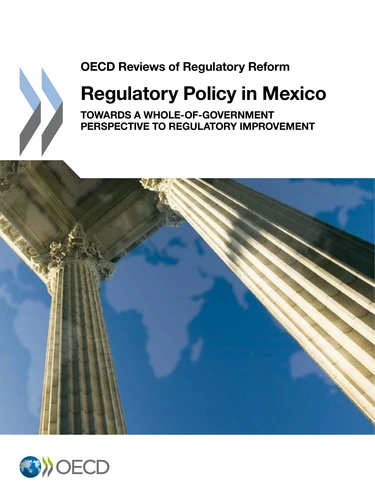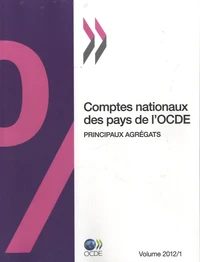Regulatory policy in mexico
Par :Formats :
Disponible dans votre compte client Decitre ou Furet du Nord dès validation de votre commande. Le format PDF est :
- Compatible avec une lecture sur My Vivlio (smartphone, tablette, ordinateur)
- Compatible avec une lecture sur liseuses Vivlio
- Pour les liseuses autres que Vivlio, vous devez utiliser le logiciel Adobe Digital Edition. Non compatible avec la lecture sur les liseuses Kindle, Remarkable et Sony
 , qui est-ce ?
, qui est-ce ?Notre partenaire de plateforme de lecture numérique où vous retrouverez l'ensemble de vos ebooks gratuitement
Pour en savoir plus sur nos ebooks, consultez notre aide en ligne ici
- Nombre de pages214
- FormatPDF
- ISBN978-92-64-20338-9
- EAN9789264203389
- Date de parution25/02/2014
- Copier Coller01 page(s) autorisée(s)
- Protection num.Digital Watermarking
- Taille2 Mo
- Transferts max.Autorisé
- Infos supplémentairesPDF avec Watermark
- ÉditeurOECD
Résumé
Mexico has made several efforts to design and implement a regulatory improvement policy over the past several years. The institutions involved in the better regulation policy have played a key role in enhancing regulatory quality. This includes the Federal Regulatory Improvement Commission (COFEMER), the Ministry of Economy, and the Ministry of Public Administration. Mexico now has two decades of experience in the application of Regulatory Impact Analysis (RIA).
Over this period, it has continued to expand the scope of RIA, to refine and improve the specific requirements and to invest substantial resources in implementation. Recently, Mexico has adopted the internationally recognised Standard Cost Model, which has brought a renewed impetus across the federal government to reduce administrative burdens generated by formalities. There is also a thriving multi-level regulatory governance programme.
As a result, Mexico is currently at a stage where positive results are being obtained. However, this is not the time to slow down; instead, further work should be fostered to step up to a new phase of regulatory quality which embeds an effective and profound regulatory improvement culture across the federal government.
Over this period, it has continued to expand the scope of RIA, to refine and improve the specific requirements and to invest substantial resources in implementation. Recently, Mexico has adopted the internationally recognised Standard Cost Model, which has brought a renewed impetus across the federal government to reduce administrative burdens generated by formalities. There is also a thriving multi-level regulatory governance programme.
As a result, Mexico is currently at a stage where positive results are being obtained. However, this is not the time to slow down; instead, further work should be fostered to step up to a new phase of regulatory quality which embeds an effective and profound regulatory improvement culture across the federal government.
Mexico has made several efforts to design and implement a regulatory improvement policy over the past several years. The institutions involved in the better regulation policy have played a key role in enhancing regulatory quality. This includes the Federal Regulatory Improvement Commission (COFEMER), the Ministry of Economy, and the Ministry of Public Administration. Mexico now has two decades of experience in the application of Regulatory Impact Analysis (RIA).
Over this period, it has continued to expand the scope of RIA, to refine and improve the specific requirements and to invest substantial resources in implementation. Recently, Mexico has adopted the internationally recognised Standard Cost Model, which has brought a renewed impetus across the federal government to reduce administrative burdens generated by formalities. There is also a thriving multi-level regulatory governance programme.
As a result, Mexico is currently at a stage where positive results are being obtained. However, this is not the time to slow down; instead, further work should be fostered to step up to a new phase of regulatory quality which embeds an effective and profound regulatory improvement culture across the federal government.
Over this period, it has continued to expand the scope of RIA, to refine and improve the specific requirements and to invest substantial resources in implementation. Recently, Mexico has adopted the internationally recognised Standard Cost Model, which has brought a renewed impetus across the federal government to reduce administrative burdens generated by formalities. There is also a thriving multi-level regulatory governance programme.
As a result, Mexico is currently at a stage where positive results are being obtained. However, this is not the time to slow down; instead, further work should be fostered to step up to a new phase of regulatory quality which embeds an effective and profound regulatory improvement culture across the federal government.























